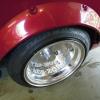Disadvantages Of Wolf 3d Ecu's?
Announcements
-
Similar Content
-
Latest Posts
-
You can lose information about timing at 50 thou, but the centrelines will still measure up correctly.
-
By Desean Strickland · Posted
How would i degree my cams on an rb25 hydraulic lifter head? lots of information online about degreeing cams on NEO or rb26 heads with solid lifters but cant find a definitive answer about hydraulic lifters. is the process just the same for both hydraulic and solid lifters on an rb (dial indicator on top of the lifter for measuring valve position) or do i have to mess with my lifter to make it solid for the degreeing process? -
Hmm. Two terminals. Probably just conductivity. If you knew the shape of the curve, you could probably just do it with a multimeter.






Recommended Posts
Create an account or sign in to comment
You need to be a member in order to leave a comment
Create an account
Sign up for a new account in our community. It's easy!
Register a new accountSign in
Already have an account? Sign in here.
Sign In Now